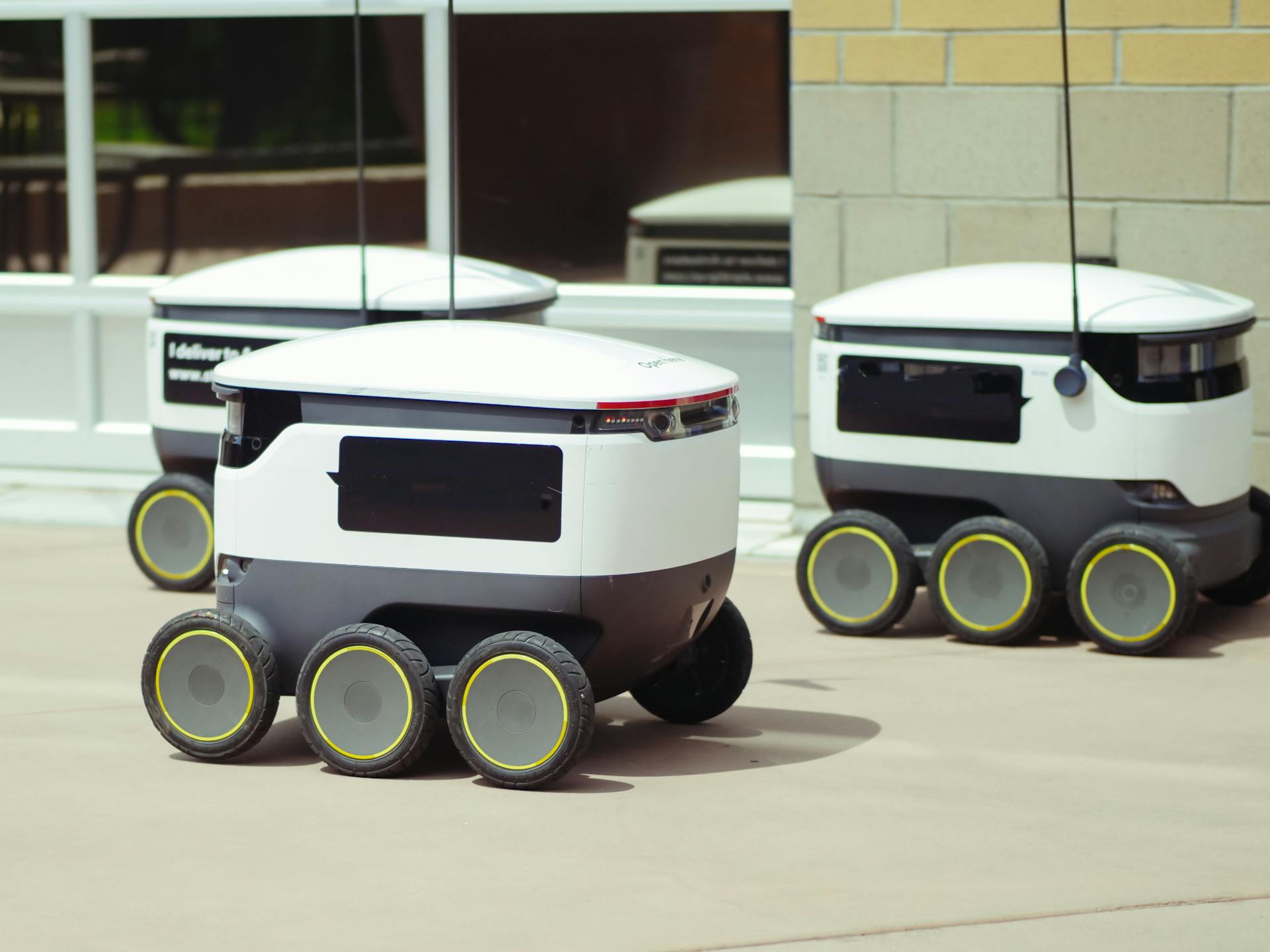In an age where instant gratification is the norm, the delivery service industry is under increasing pressure to meet customer demands for speed, efficiency, and reliability. What was once a simple task of getting a package from point A to point B has now evolved into a complex, high-tech operation that involves optimizing every step of the journey.
The delivery service industry has undergone a dramatic transformation in recent years, spurred by the rapid growth of e-commerce and rising customer expectations. As consumers demand faster, more efficient delivery options, businesses are turning to innovative technologies to keep up with the changing landscape. Among these, Artificial Intelligence (AI) and Machine Learning (ML) have emerged as powerful tools, reshaping logistics and transportation systems around the globe. From route optimization and autonomous vehicles to personalized customer experiences, AI and ML are revolutionizing the way goods are transported, making deliveries faster, smarter, and more reliable than ever before. As these technologies continue to evolve, their impact on the future of delivery services is nothing short of game-changing.
The Growing Demand for Efficient Delivery Services
The surge in e-commerce has reshaped the delivery service industry, prompting businesses to adapt rapidly to the growing demand for faster and more reliable solutions. As online shopping becomes an everyday part of consumers’ lives, the volume of packages needing to be delivered has skyrocketed. According to recent studies, global e-commerce sales are expected to surpass $6 trillion in the coming years, fueling the need for efficient delivery systems. However, this growth also brings with it higher customer expectations, particularly regarding speed and reliability. Consumers now expect same-day or next-day delivery for most products, with real-time tracking and precise delivery windows.
As a result, businesses face the challenge of not only meeting these demands but also keeping costs under control. Traditional delivery methods are no longer sufficient, and companies must seek innovative solutions to optimize their operations. This is where AI and machine learning come into play, offering advanced tools to streamline logistics, reduce delivery times, and minimize operational costs.
AI and Machine Learning Technologies in Delivery Services
Artificial Intelligence (AI) and Machine Learning (ML) are at the forefront of the technological revolution in delivery services. AI refers to the simulation of human intelligence in machines that can perform tasks like decision-making and problem-solving, while machine learning is a subset of AI that allows systems to learn from data and improve over time. In the context of delivery services, these technologies are being integrated into every aspect of the operation, from route planning and inventory management to customer service and autonomous delivery.
Key technologies powered by AI and ML include predictive analytics, which uses historical data to forecast demand and optimize inventory; real-time tracking, which provides customers with live updates on their deliveries; and autonomous vehicles, which have the potential to revolutionize last-mile delivery. These innovations not only enhance the efficiency of delivery services but also contribute to cost savings and improved customer satisfaction.
Optimizing Delivery Routes with AI
One of the most impactful applications of AI in delivery services is route optimization. Traditional methods of planning delivery routes are time-consuming and inefficient, often relying on static maps and manual calculations. AI-driven route optimization algorithms, on the other hand, can process real-time data, taking into account variables like traffic, weather, and road closures to calculate the fastest and most efficient routes. This leads to shorter delivery times, lower fuel costs, and reduced environmental impact.
Several delivery companies are already benefiting from AI-powered route optimization. For instance, UPS uses an AI-driven system called ORION (On-Road Integrated Optimization and Navigation), which analyzes over 200,000 potential route combinations daily to optimize delivery schedules. This has helped the company save millions of dollars annually while reducing its carbon footprint. Similarly, Amazon has developed an AI system that analyzes traffic data, weather conditions, and customer delivery windows to predict the best routes for its fleet of drivers.
Enhancing Delivery Accuracy and Efficiency
Machine learning also plays a crucial role in enhancing the accuracy and efficiency of delivery operations. By analyzing vast amounts of data, ML algorithms can help businesses predict demand and optimize inventory management. This ensures that the right products are available at the right time, reducing the likelihood of stockouts and delays in shipping.
In addition, AI and automation are improving package sorting, packaging, and dispatching. For example, many warehouses are now equipped with robotic systems powered by AI to sort packages more efficiently and accurately than human workers. Automation also extends to last-mile delivery, where AI-driven robots and drones are being deployed to handle the final leg of the delivery journey. This reduces human error and accelerates delivery times, all while minimizing labor costs.
Autonomous Delivery Vehicles and Drones
The rise of autonomous vehicles and drones represents a major breakthrough in the delivery service industry. Last-mile delivery, the final step of transporting goods to customers, is often the most costly and time-consuming part of the process. Autonomous vehicles, such as self-driving delivery vans and robots, are being developed to reduce the need for human drivers and minimize delivery costs. These vehicles use AI to navigate streets, avoid obstacles, and make deliveries with minimal human intervention.
Drones are also playing a growing role in last-mile delivery. Powered by AI, drones can carry small packages directly to customers’ doorsteps, bypassing road traffic and reducing delivery times. Companies like Amazon and UPS are experimenting with drone delivery, with some regions already seeing pilot programs in action. These advancements not only cut down on delivery time but also help reduce environmental impact by utilizing electric-powered vehicles.
Improving Customer Experience
AI and machine learning are also improving the customer experience by offering personalized delivery options. AI algorithms can analyze past purchasing behavior, location data, and delivery preferences to recommend the best delivery options for each customer. For instance, a customer may choose a specific delivery window or opt for a locker pickup instead of home delivery. This level of personalization ensures that customers have a more tailored and convenient experience.
Furthermore, AI-driven chatbots and customer service systems are enhancing communication between delivery companies and their customers. These virtual assistants can answer customer inquiries, provide updates on package status, and even handle complaints, all in real-time. Predictive delivery times powered by AI allow customers to know exactly when to expect their packages, further boosting satisfaction.
Challenges and Limitations
While the integration of AI and machine learning into delivery services holds immense promise, there are several challenges and limitations that companies must navigate. Data privacy and security concerns are at the forefront, as the collection and analysis of vast amounts of customer data raises questions about how that information is stored and used. Additionally, the integration of AI into existing systems can be complex and costly, especially for smaller businesses.
Regulatory and legal hurdles also present challenges, particularly in the case of autonomous vehicles and drones. Governments are still working to establish clear guidelines and regulations for the safe operation of these technologies, which could slow their widespread adoption.
The Future of AI and Machine Learning in Delivery Services
Looking ahead, the future of AI and machine learning in delivery services is filled with exciting possibilities. AI-driven hyper-local deliveries, where goods are sent directly from warehouses to customers in smaller geographic areas, could become a significant trend. As autonomous fleets grow in size and efficiency, the entire delivery process could become more streamlined, with robots and drones taking on increasingly important roles in last-mile delivery.
Advancements in AI and machine learning have the potential to reshape the global logistics industry, making deliveries faster, cheaper, and more sustainable. As the technology continues to evolve, it will unlock new innovations that will further transform the delivery landscape.
Conclusion
AI and machine learning are undeniably transforming the delivery service industry, enabling companies to meet the growing demand for faster, more reliable, and cost-effective delivery solutions. From optimizing routes and automating processes to enhancing customer experiences and paving the way for autonomous vehicles, these technologies are improving every aspect of the delivery journey. As the industry continues to evolve, AI and machine learning will remain at the heart of innovation, driving efficiency, sustainability, and customer satisfaction in the future of delivery services.
Frequently Asked Questions
- How is AI used to optimize delivery routes?
AI optimizes delivery routes by analyzing real-time data such as traffic conditions, weather forecasts, and road closures. AI algorithms calculate the fastest and most efficient routes for delivery drivers, reducing fuel consumption, travel time, and costs. This ensures timely deliveries while minimizing environmental impact. - What role do autonomous vehicles play in delivery services?
Autonomous vehicles, including self-driving vans and delivery robots, are being used for last-mile deliveries. These vehicles use AI to navigate roads, avoid obstacles, and deliver packages without human drivers. Autonomous delivery systems help reduce delivery costs, improve efficiency, and shorten delivery times. - How does machine learning improve inventory management in delivery services?
Machine learning helps predict demand by analyzing historical data and customer behavior. This allows businesses to optimize inventory levels, ensuring that popular items are in stock and available for immediate delivery. Efficient inventory management reduces delays, stockouts, and overstocking, improving overall service quality. - What are the benefits of using drones for deliveries?
Drones offer several advantages in last-mile delivery, including faster deliveries, reduced traffic congestion, and lower operational costs. Drones can fly directly to customers’ locations, bypassing road traffic, and making deliveries quicker, especially in urban areas. They are also environmentally friendly due to their electric-powered nature. - Are AI-powered delivery systems safe and secure?
While AI-powered systems have demonstrated significant efficiency improvements, safety and security are top concerns. AI systems are designed with safety protocols to minimize the risk of accidents, especially in autonomous vehicles. Additionally, companies are implementing data protection measures to safeguard customer information and ensure privacy. - What challenges do delivery companies face when implementing AI and machine learning?
Some of the main challenges include the high initial cost of integrating AI technologies, data privacy concerns, and the complexity of transitioning from traditional systems. Regulatory and legal hurdles also exist, particularly for autonomous vehicles and drones, as governments continue to develop guidelines for their use. - How can AI improve the customer experience in delivery services?
AI enhances the customer experience by providing personalized delivery options based on past behaviors and preferences. AI-driven chatbots offer real-time customer support, while predictive delivery times ensure customers receive accurate updates about when their packages will arrive, improving satisfaction and trust. - What is the future of AI in the delivery industry?
The future of AI in delivery services holds exciting possibilities, such as AI-driven hyper-local deliveries, autonomous fleets, and further advancements in drone and robot technology. As AI continues to evolve, delivery companies will increasingly rely on it to enhance efficiency, reduce costs, and offer more personalized and sustainable delivery options.

